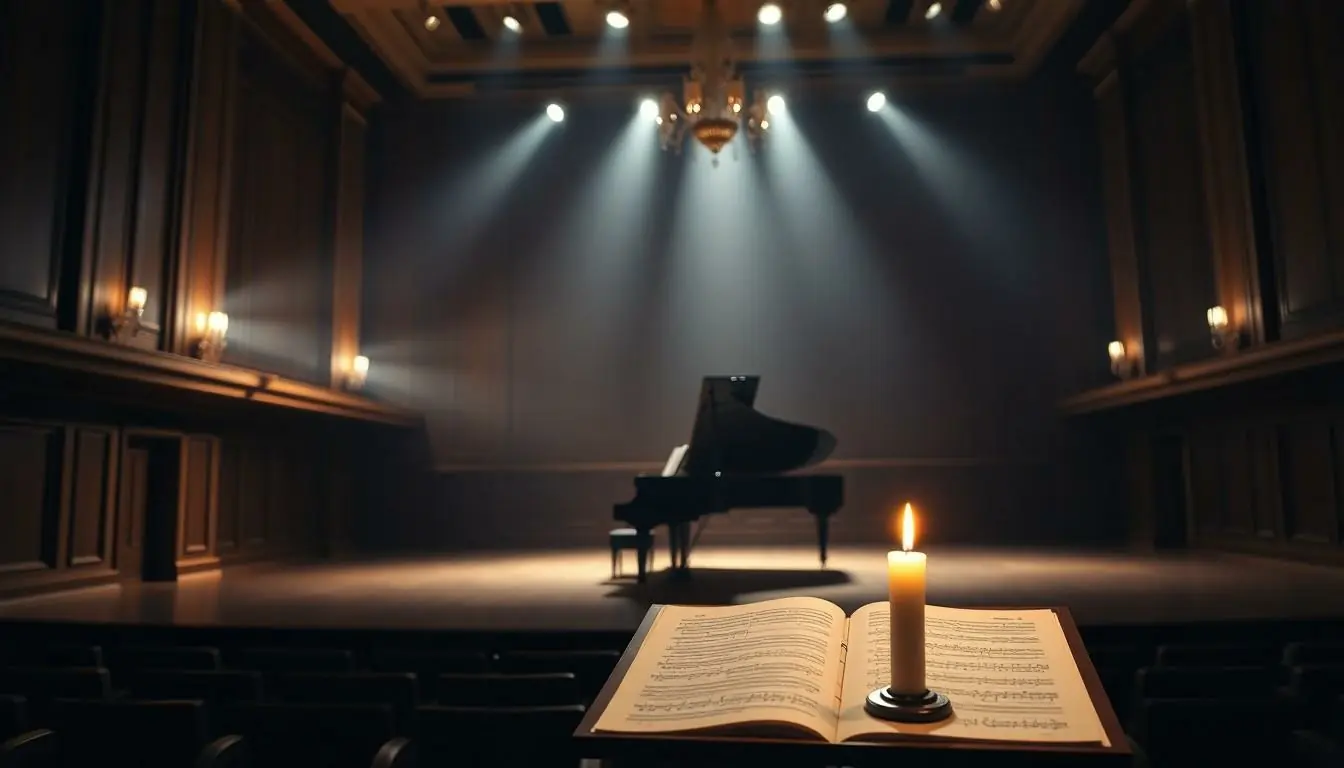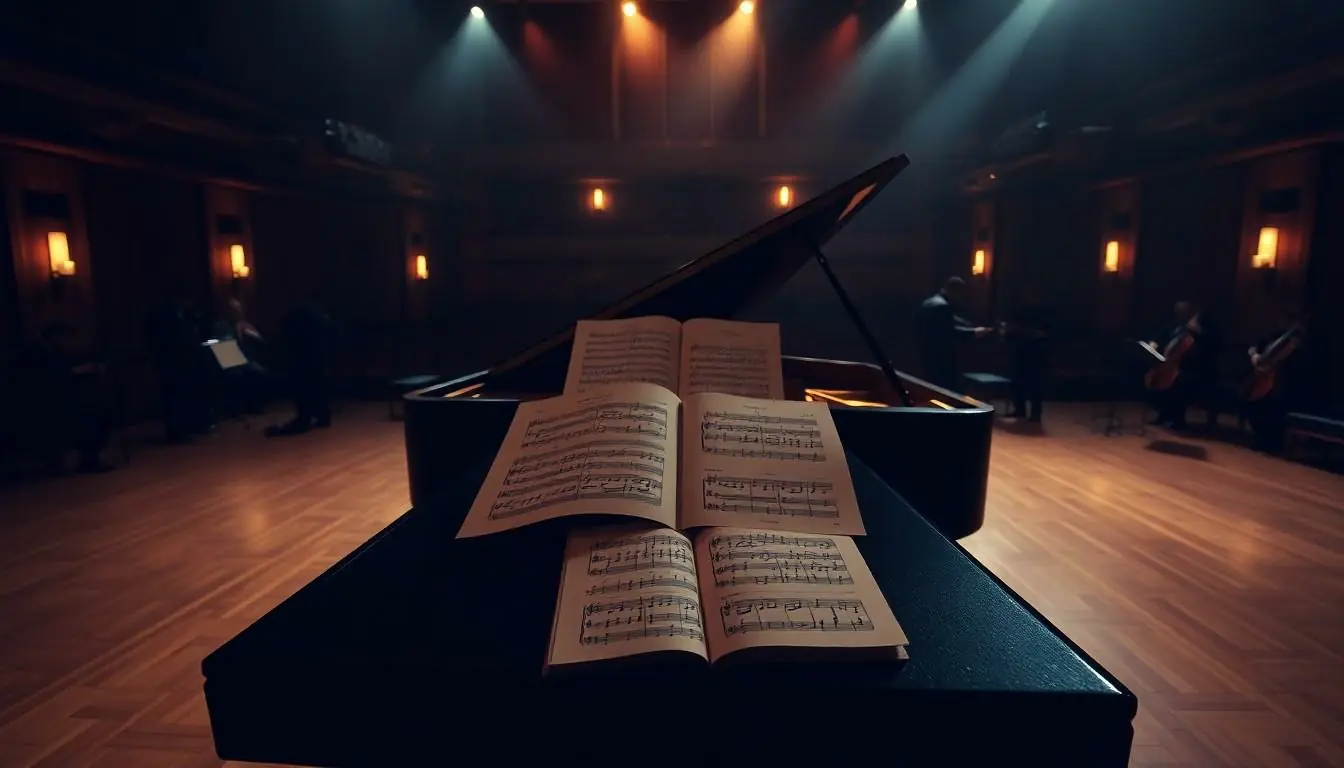When life gets a bit too cheerful, sometimes the soul craves a soundtrack that matches its mood. Enter the world of classical music, where heart-wrenching melodies and poignant harmonies can turn even the sunniest day into a reflective journey. From the melancholic strains of Chopin to the haunting echoes of Mahler, these compositions tug at the heartstrings like a puppy begging for treats.
Imagine sitting in a cozy corner with a cup of tea, letting the saddest classical pieces wash over you. It’s not just about feeling blue; it’s about embracing the beauty in sorrow. These masterpieces remind us that it’s okay to feel deeply. So, grab some tissues and prepare to dive into the most emotionally charged classical music that’ll have you questioning your life choices and possibly reaching for that extra slice of chocolate cake.
Table of Contents
ToggleUnderstanding Saddest Classical Music
Saddest classical music evokes powerful emotions and resonates deeply with listeners. This music often serves as a gateway to exploring themes of sorrow and reflection.
The Emotional Impact of Music
Music’s emotional impact plays a significant role in human experience. Compositions by artists like Chopin and Mahler connect listeners to their own feelings of sadness. Melodic phrases often create a sense of longing and nostalgia. Each note carries weight, prompting introspection about life’s challenges and joys. Familiar melodies can transport individuals to moments of personal significance, enhancing feelings of empathy. By listening to these works, audiences often find comfort and solace, making the experience deeply moving.
Historical Context of Melancholy in Classical Music
Historical context shapes the understanding of melancholy in classical music. Composers in different eras used music to express sorrow and despair. Romantic era composers like Schubert and Beethoven filled their works with emotional depth. They highlighted struggles in human existence, reflecting societal challenges of their times. Dissonant chords and minor keys often signify sadness, creating a unique atmosphere. Additionally, the influence of art movements, such as Romanticism, further emphasized personal emotion in music. This backdrop helps listeners appreciate the nuances in each piece, revealing layers of meaning behind the sadness.
Notable Compositions in Saddest Classical Music

Several compositions stand out within the realm of saddest classical music. These works evoke profound emotions, inviting listeners to experience deep melancholy.
Adagio for Strings by Samuel Barber
Samuel Barber’s “Adagio for Strings” exemplifies mourning through its hauntingly beautiful melodies. The piece unfolds slowly, utilizing a gradual crescendo that heightens feelings of sorrow. Composed in 1936, it gained prominence during the 20th century, frequently featured in memorials and tributes. Its rich harmonies resonate with listeners, allowing them to connect with their own feelings of loss. Critics often praise Barber for his ability to convey intense emotion through simplicity. The music’s lasting impact continues to affirm its status as a poignant expression of grief.
Symphony No. 7 in E Minor by Antonín Dvořák
Antonín Dvořák’s “Symphony No. 7 in E Minor” embraces themes of struggle and despair. Completed in 1885, this symphony reflects the composer’s emotional journey, drawing from both personal and nationalistic influences. The work combines lush orchestration with powerful motifs, capturing the essence of melancholy throughout its movements. Themes of heroism intermingle with deep sorrow, creating a rich emotional landscape. The symphony’s third movement, marked by its somber character, exemplifies Dvořák’s innovative approach to expressing sadness. Music lovers frequently revisit this piece for its ability to evoke strong feelings and contemplation.
Famous Composers of Sad Classical Music
Sad classical music often connects with the human experience through the works of influential composers who excelled in expressing deep emotional resonance.
Frédéric Chopin’s Influence
Chopin’s compositions feature poignant melodies that evoke feelings of melancholy. His “Nocturnes” and “Preludes” capture the essence of longing and despair. Harmonic choices often include minor keys and rich textures, enhancing the emotional depth of each piece. The reflective nature of his music invites introspection, making it a staple in the repertoire of pianists exploring sadness. Renowned for his ability to blend delicate phrasing with intense emotion, Chopin remains a significant figure in the realm of sad classical music. His influence on future composers underscores the lasting impact of his emotive style.
Gustav Mahler’s Symphonic Tragedies
Mahler’s symphonies present a profound exploration of existential themes and human suffering. His “Symphony No. 5” features the haunting Adagietto, often interpreted as a meditation on love and loss. Emotional complexity defines Mahler’s work, merging contrasting moods and orchestral forces. The use of expansive forms allows for a deep emotional journey, drawing listeners into a world of despair and hope. Additionally, the somber themes in “Symphony No. 6” reflect internal struggles and fate’s cruelty. Mahler’s ability to articulate sorrow through symphonic structure establishes him as a pivotal composer of sad classical music.
The Role of Instrumentation
Instrumentation plays a crucial role in conveying the emotional weight of classical music. Different instruments evoke distinct feelings, shaping the listener’s experience.
Strings vs. Woodwinds in Evoking Sadness
Strings create a rich, haunting soundscape that resonates with sorrow. Cellos often express profound despair through their deep tones. Violins, with their ability to deliver soaring melodies, evoke feelings of longing and nostalgia. Woodwinds, such as oboes and clarinets, contribute to a sense of melancholy with their breathy, fragile tones. Together, strings and woodwinds craft intricate emotional narratives. Their interplay enhances the sense of sadness, allowing composers to explore a range of human emotions.
The Piano’s Unique Emotional Range
The piano showcases a unique emotional range that captures deep sadness effectively. Its ability to produce both delicate and powerful sounds adds to its expressive potential. Composers like Chopin utilize the piano to convey poignant moments through dynamic contrasts and rich harmonies. Soft passages invite introspection, while thunderous chords create a sense of turmoil. The versatility of the piano enables it to reflect human emotions in a profound way. It often serves as the backbone of somber compositions, inviting listeners into a world of sorrow and reflection.
Exploring the saddest classical music reveals a profound emotional landscape that resonates deeply with listeners. The works of composers like Chopin and Mahler showcase the beauty found in sorrow. These pieces not only evoke feelings of longing and nostalgia but also offer solace during times of reflection.
By embracing the intricate melodies and harmonies of these compositions, individuals can connect with their own emotions and find comfort in shared experiences of sadness. The rich textures created by various instruments enhance the emotional narratives, allowing listeners to fully immerse themselves in the poignant moments captured within each piece. Ultimately, the journey through this melancholic music invites a deeper appreciation for the complexities of human emotion.




